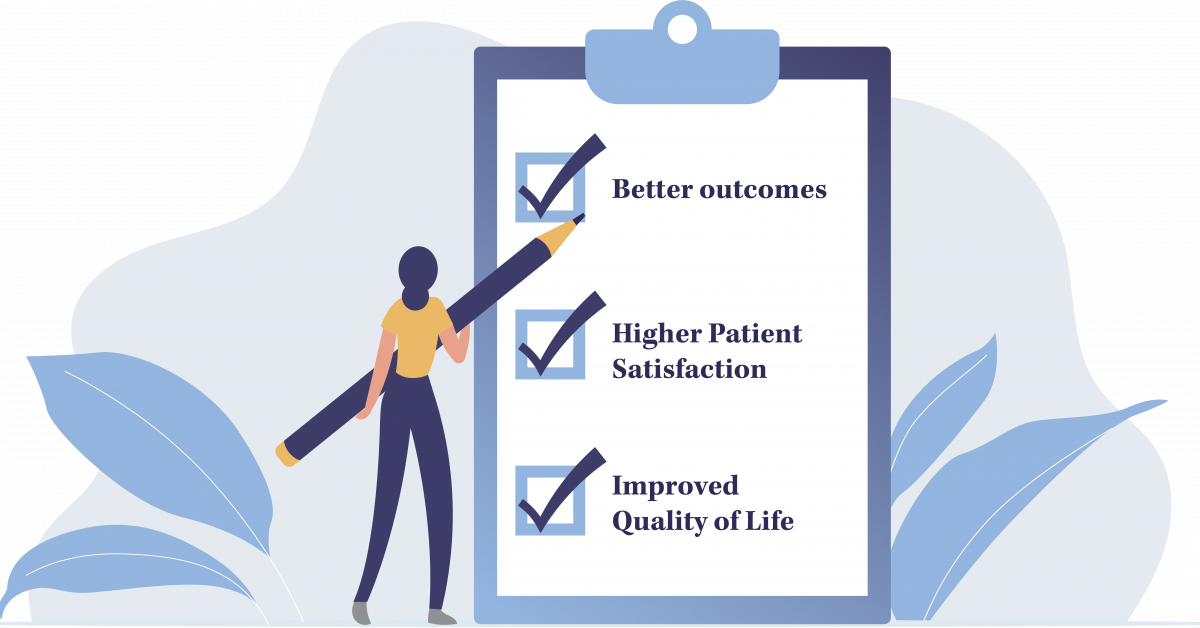Palliative care is an interdisciplinary approach to care for those with serious illnesses. Despite the significant growth and availability of palliative care in the United States over the past decade, it remains largely misunderstood by the general public.
Palliative care is most effective when patients are referred early, at the time of their diagnosis. Yet for too many patients, palliative care referral happens too late to improve quality of life. A better understanding of what palliative care is, and how it improves outcomes can encourage early referral and reduce unnecessary physical, emotional, and financial expense.
What Palliative Care Is and Is Not
Healthcare providers still struggle with messaging when it comes to palliative care. Patients, and sometimes providers, mistakenly view palliative care as the same as hospice. Among the studied barriers to palliative care are physician resistance and the unrealistic expectations of patients and their families. Of course, both doctors and patients want to reduce suffering and prolong life. The irony is that early palliative care referral has been shown to do just that.
Palliative care has several things in common with hospice. Both focus on the reduction of stress and suffering, and both provide relief for physical and psychosocial pain. However, unlike hospice, palliative care can begin at the time of diagnosis, is appropriate for those with any length of life expectancy, and can be administered alongside curative treatment. Patients who are cured of long-term illness still benefit from palliative care, although they someday may no longer need it.
Patients assigned to early palliative care (EPC) report better quality of life and have fewer depressive symptoms. In one seminal study, EPC patients with metastatic lung cancer lived longer, despite choosing not to receive aggressive end of life care.
What Home-Based Palliative Care Looks Like
Traditionally, providers have been at the center of their patient’s care, treating long-term illness survivors with regular office visits. Cancer patients, for example, would see their oncologist for regular chemotherapy sessions, an easy yes or no decision when little else was available to ameliorate symptoms and pain. Today, however, cancer therapeutics are as varied and complex as the many types of cancer treated. Demand on a provider’s time and patient stress both increase as the provider team grows and treatment decisions become more complex.
Palliative care teams act as a connector between patients and their often multiple providers and supplement the agendas of both. Providers benefit from a team that can offer home visits and 24/7 care, as does the patient. Kara Health’s patient concierge and disease-specific case managers work closely with their assigned patients to ensure quality of clinical care, but also home delivery of durable medical equipment, transportation to and from appointments, and coordination of clinical in-home visits. Kara’s concierge team can also expedite and prioritize medication authorizations which can prove invaluable in regards to outcomes. This additional level of assistance can be life-changing for seriously ill patients who struggle with following complex plans of care.
Importantly, palliative care includes an equal focus on the spiritual and psychological health of the patient, directly addressing the deeply personal needs of those who have been diagnosed with serious, long-term illness. Palliative care teams may include an interdisciplinary team of physicians, nurse practitioners, dieticians, clinical therapists, and spiritual guides. Each discipline complements the other to treat the whole patient.
When palliative care takes place at home, rather than the hospital, quality of life further improves and pandemic fears are eased. This is the work that providers cannot do on their own, nor should they be expected to. Palliative care providers such as Kara Health are not a replacement for any primary care provider or medical team, but valuable partners in assisting patients through their journey, whether that be toward health or a peaceful and intentional transition to end of life.
From Palliative Care to Hospice
EPC patients make use of hospice services in a more timely and appropriate manner. At Kara Health, we see up to 50% increased hospice utilization. This translates to fewer patients seeking aggressive treatment, such as chemotherapy, in their final 30 days of life and results in EPC patients being more likely to die at home, versus in the hospital. These outcomes are not only associated with cost savings, but are correlated with improved quality of life and increased satisfaction with care for both the patient and their family.
Traditionally, hospice referral has been the responsibility of the patient’s physician. However, as curative treatment has become increasingly complex and physician teams expand, the choice to begin hospice increasingly falls on the shoulder of patients, whose fear and reluctance to admit approaching death are barriers to relinquishing ongoing treatment.
Patients enrolled in palliative care are more likely to have completed a POLST form and discussed end of life wishes. They are not only more likely to choose an at-home death, but more likely to receive it. Home is generally the most preferred place of death, yet this choice is not always available to those receiving end-of-life care in a hospital setting.
Families of patients who spent 3 days or more in hospice care report greater satisfaction with their quality of care than families of those who were admitted to the ICU within 30 days of their death. Late-term aggressive treatment is an expensive and futile strategy and accounts for upwards of 50% of Medicare spending in a patient’s last year of life.
When to Consider Palliative Care Referral
Palliative care is a patient-centered holistic program that complements curative treatment and can ease the transition to end of life if necessary. With that in mind, there’s no reason to delay patient enrolment in a palliative care program if the following criteria are met.
The patient has a primary diagnosis of one or more of the following:
- Cancer (Stage 3, 4, or 5)
- Coma
- Heart Disease
- HIV
- Liver Disease
- Renal Disease
- Pulmonary Disease (Chronic Obstructive Pulmonary Disease, Interstitial
Lung Disease, Pulmonary Fibrosis)
- Neurological Disease (ALS, Alzheimer’s, Brain Tumor, Huntington’s, Lewy Body
Dementia, Multiple Sclerosis, Parkinsons, Stroke)
Patient behavior includes one or more of the following:
- Frequent Emergency Department visits
- Multiple hospitalizations
- Decline in disease progression
- Recurrent infections or non-healing wounds
- Significant weight loss
- Multiple falls
- Recent Skilled Nursing Facility stay
- Incontinence
- Difficulty with daily living activities
In a powerful 2014 study in the Journal of the American Heart Association researchers found it was not clear that providers understood the domain of palliative care and how it differs from hospice. Many had no idea palliative services could exist alongside life-prolonging therapy, and thus failed to refer their patients to palliative care providers until they had reached a point at which they were “unable to do more.” Prolonging palliative care referral benefits neither the patient nor the provider, while earlier referral benefits everyone.
Increasing awareness about what palliative care is can help providers integrate palliative care into primary health care and home-based care much earlier. This partnership advances the sustainability of long-term care and, according to the World Health Organization, should be considered an ethical duty as it supports greater physical, emotional, and financial wellness.




